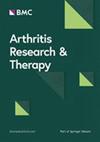Association of exercise-induced pulmonary hypertension with nailfold capillary density in systemic sclerosis: a single-center retrospective observational study
IF 4.6
2区 医学
Q1 Medicine
引用次数: 0
Abstract
Exercise-induced pulmonary hypertension (exercise PH) is instrumental in the early detection of pulmonary arterial hypertension. However, the prevalence and specific characteristics of exercise PH in systemic sclerosis (SSc), as well as factors that might facilitate its identification, remain inadequately understood. We investigated the clinical profiles of SSc patients diagnosed as PH, exercise PH, or non-PH. This study included 50 patients with SSc and exercise intolerance. We compared the physical examination findings, biochemistry tests, echocardiography, respiratory function tests, and resting and exercise right heart catheterization outcomes of the PH, exercise PH, or non-PH groups. In a cohort of 50 patients with SSc and exercise intolerance, 30.0% were diagnosed with PH, and 44.0% exhibited exercise PH. Symptoms such as exertional dyspnea and palpitations were more prevalent in the exercise PH group compared to the non-PH group. Furthermore, a lower nailfold capillary density was observed in the exericse PH group. However, there was no difference between the two groups in terms of NT-proBNP level, serum uric acid, inflammatory findings, %DLco%, FVC/%DLco ratio, six-minute walking distance, or peak tricuspid regurgitant velocity. exercise PH was detected in 87.5% of patients presented all with exertional dyspnoea, exertional palpitations, and capillary density ≤ 7/mm. In many patients within the exercise PH group, the pulmonary artery wedge pressure/cardiac output slope exceeded 2 mmHg/L/min, indicating latent heart failure with preserved ejection fraction (HFpEF). In our study, 44.0% of patients with SSc and exercise intolerance exhibited exercise PH, with many potentially having HFpEF. Decreased nailfold capillary density, exertional dyspnea, and palpitations were indicative markers useful for exercise PH screening. exercise PH was present in 44.0% of patients with SSc and exercise intolerance. Most of SSc patients with exercise PH may have had HFpEF. exercise PH was found in 87.5% of SSc patients with dyspnoea, palpitations, and capillary density ≤ 7.系统性硬化症患者运动性肺动脉高压与甲襞毛细血管密度的关系:一项单中心回顾性观察研究
运动性肺动脉高压(exercise PH)在肺动脉高压的早期检测中起着重要作用。然而,在系统性硬化症(SSc)中,运动PH值的患病率和具体特征,以及可能有助于其识别的因素,仍然没有得到充分的了解。我们调查了诊断为PH、运动PH或非PH的SSc患者的临床资料。这项研究包括50例伴有SSc和运动不耐受的患者。我们比较了PH组、运动PH组和非PH组的体格检查结果、生化检查、超声心动图、呼吸功能检查以及静息和运动右心导管检查结果。在一组50例伴有SSc和运动不耐受的患者中,30.0%的患者被诊断为PH, 44.0%的患者表现为运动PH。与非运动PH组相比,运动PH组的运动呼吸困难和心悸等症状更为普遍。此外,运动PH组甲襞毛细血管密度较低。然而,两组在NT-proBNP水平、血清尿酸、炎症表现、%DLco%、FVC/%DLco比率、6分钟步行距离或三尖瓣峰值反流速度方面没有差异。87.5%的患者出现运动性呼吸困难、运动性心悸、毛细血管密度≤7/mm。在运动PH组的许多患者中,肺动脉楔压/心输出斜率超过2 mmHg/L/min,提示具有保留射血分数(HFpEF)的潜在心力衰竭。在我们的研究中,44.0%的SSc和运动不耐受患者表现为运动性PH,许多患者可能患有HFpEF。甲襞毛细血管密度降低、运动性呼吸困难和心悸是运动PH筛查有用的指示性指标。44.0%的SSc和运动不耐受患者存在运动PH。大多数伴有运动性PH的SSc患者可能患有HFpEF。87.5%的SSc患者存在运动PH,伴有呼吸困难、心悸、毛细血管密度≤7。
本文章由计算机程序翻译,如有差异,请以英文原文为准。
求助全文
约1分钟内获得全文
求助全文
来源期刊

Arthritis Research & Therapy
RHEUMATOLOGY-
CiteScore
8.60
自引率
2.00%
发文量
261
审稿时长
14 weeks
期刊介绍:
Established in 1999, Arthritis Research and Therapy is an international, open access, peer-reviewed journal, publishing original articles in the area of musculoskeletal research and therapy as well as, reviews, commentaries and reports. A major focus of the journal is on the immunologic processes leading to inflammation, damage and repair as they relate to autoimmune rheumatic and musculoskeletal conditions, and which inform the translation of this knowledge into advances in clinical care. Original basic, translational and clinical research is considered for publication along with results of early and late phase therapeutic trials, especially as they pertain to the underpinning science that informs clinical observations in interventional studies.
 求助内容:
求助内容: 应助结果提醒方式:
应助结果提醒方式:


